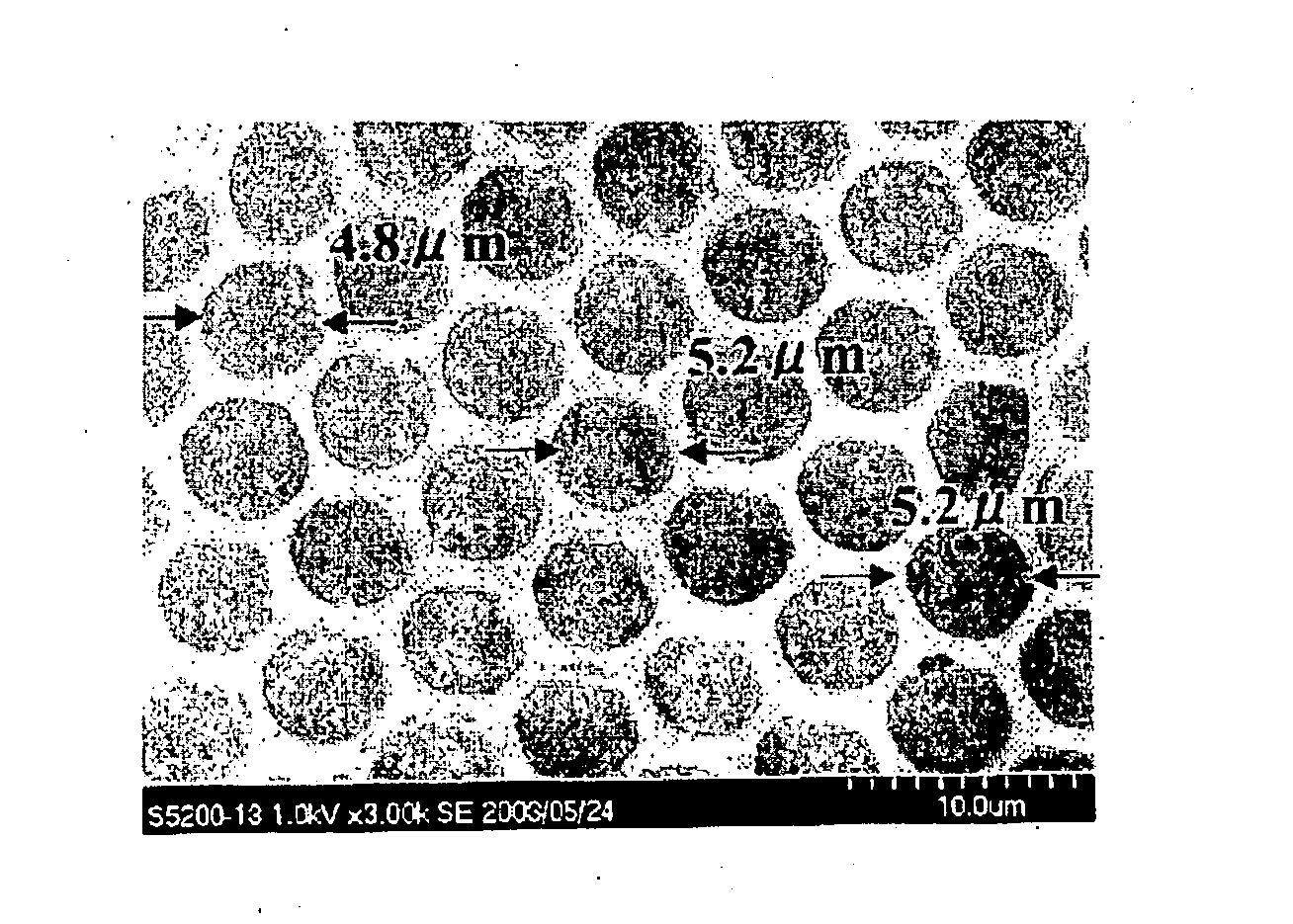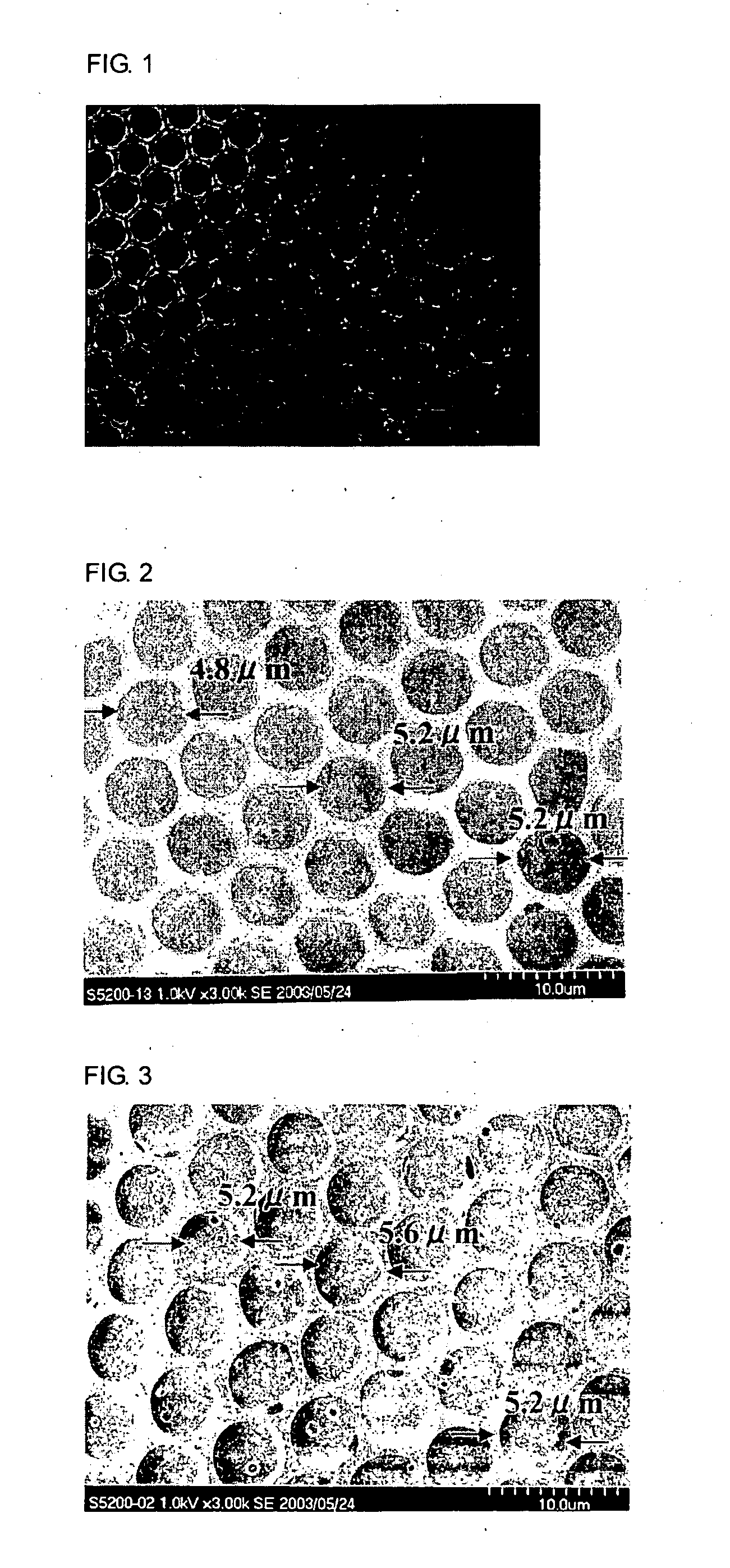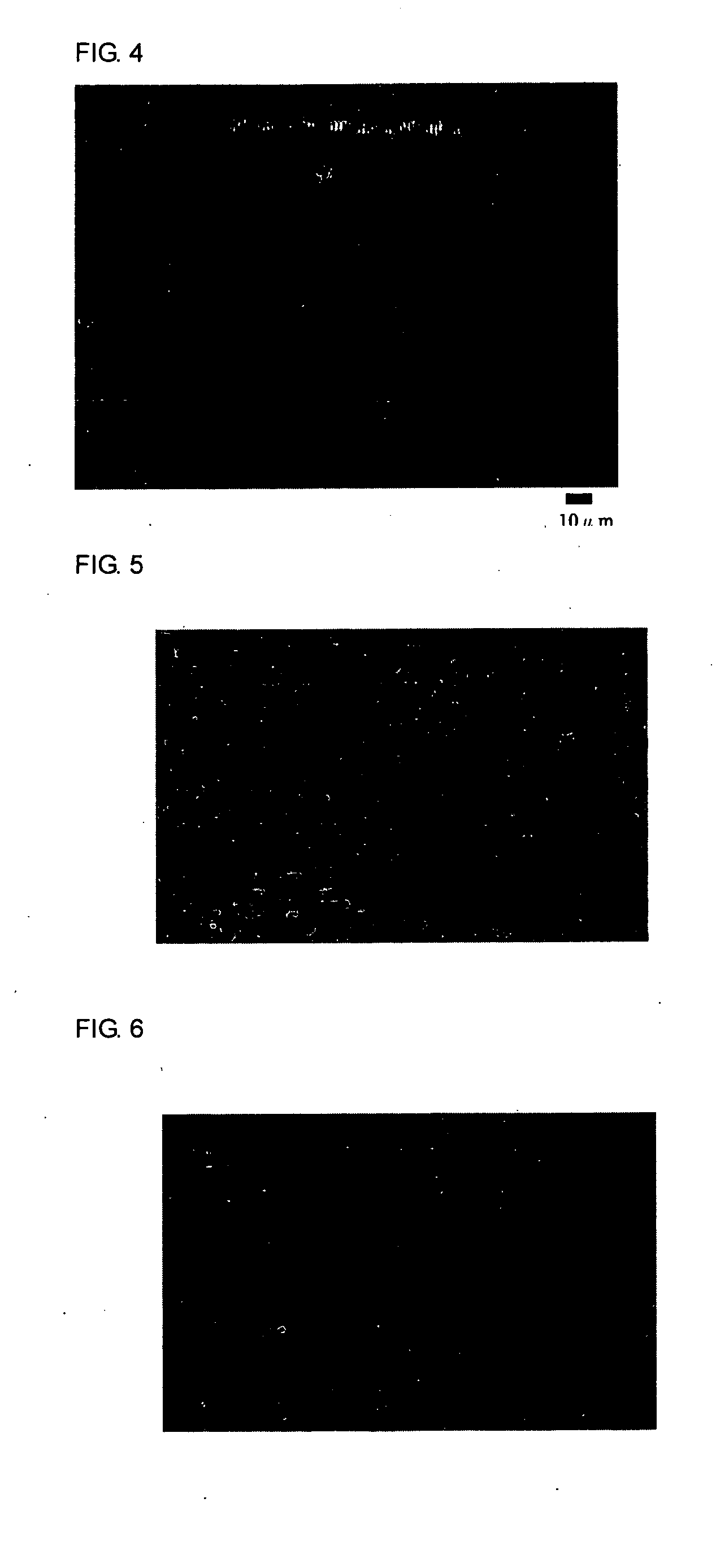Biodegradable film having honeycomb structure
a biodegradable film and honeycomb technology, applied in the field of anti-adhesion membranes, can solve the problems of poor handling properties, unsatisfactory adhesion in a normal area, risk of immune response, etc., and achieve the effect of enhancing safety and convenient handling
- Summary
- Abstract
- Description
- Claims
- Application Information
AI Technical Summary
Benefits of technology
Problems solved by technology
Method used
Image
Examples
example 1
[0047] A chloroform solution of polylactic acid (molecular weight: 100,000) (5 g / L) was mixed with, as an amphiphilic polymer, a polyacrylamide copolymer (weight average molecular weight: 85,000) as represented by the compound formula 1 in a proportion of 10 / 1, the mixture was cast on a glass substrate and allowed to stand under a condition at room temperature and at a humidity of 70%, and the solvent was gradually evaporated off to prepare a honeycomb structure. The thus obtained honeycomb structure had a size of void inner diameter of 5 μm and a film thickness of 13 μm. An optical microscope photograph thereof is shown in FIG. 1.
example 2
[0048] A chloroform solution of a lactic acid-glycolic acid coplymer (copolymer ratio: 75 / 25, molecular weight: 100,000) (5 g / L) was mixed with, as an amphiphilic polymer, the polyacrylamide copolymer in a proportion of 10 / 1, the mixture was cast on a glass substrate and allowed to stand under a condition at room temperature and at a humidity of 70%, and the solvent was gradually evaporated off to prepare a honeycomb structure. The thus obtained honeycomb structure had a size of void inner diameter of 5 μm and a film thickness of 13 μm.
[0049] The polyacrylamide copolymer as used has the following structural formula.
[Formula]
(m and n each represents a repeating unit, and m / n is ¼.)
example 3
[0052] Male SPF hairless rats (mean body weight: 250 g) were anesthetized by intraperitoneal injection; the abdominal region was cut open to expose the stomach; the integument of the wall surface of the stomach fundus was wounded about 8 mm; and each of the anti-adhesion membrane as obtained in Examples 1 and 2 and Comparative Examples 1 and 2 (three-centimeter sides) was stuck thereon every one sheet per rat. One week after sticking the anti-adhesion membrane, autopsy was performed to observe the adhesion state with the naked eye. As a result, the results regarding the adhesion state of each rat as shown in Table 1 were obtained.
[0053] In the honeycomb structure films of Examples 1 and 2, neither gelation nor dissolution was caused in the state of dipping in water, sticking to a wound area was easy because of flexibility of the film, and handling properties were good. A remarkable inflammatory response or the like was not caused, and it was noted that the anti-adhesion membrane as...
PUM
| Property | Measurement | Unit |
|---|---|---|
| inner diameter | aaaaa | aaaaa |
| weight ratio | aaaaa | aaaaa |
| size | aaaaa | aaaaa |
Abstract
Description
Claims
Application Information
 Login to View More
Login to View More - R&D
- Intellectual Property
- Life Sciences
- Materials
- Tech Scout
- Unparalleled Data Quality
- Higher Quality Content
- 60% Fewer Hallucinations
Browse by: Latest US Patents, China's latest patents, Technical Efficacy Thesaurus, Application Domain, Technology Topic, Popular Technical Reports.
© 2025 PatSnap. All rights reserved.Legal|Privacy policy|Modern Slavery Act Transparency Statement|Sitemap|About US| Contact US: help@patsnap.com



